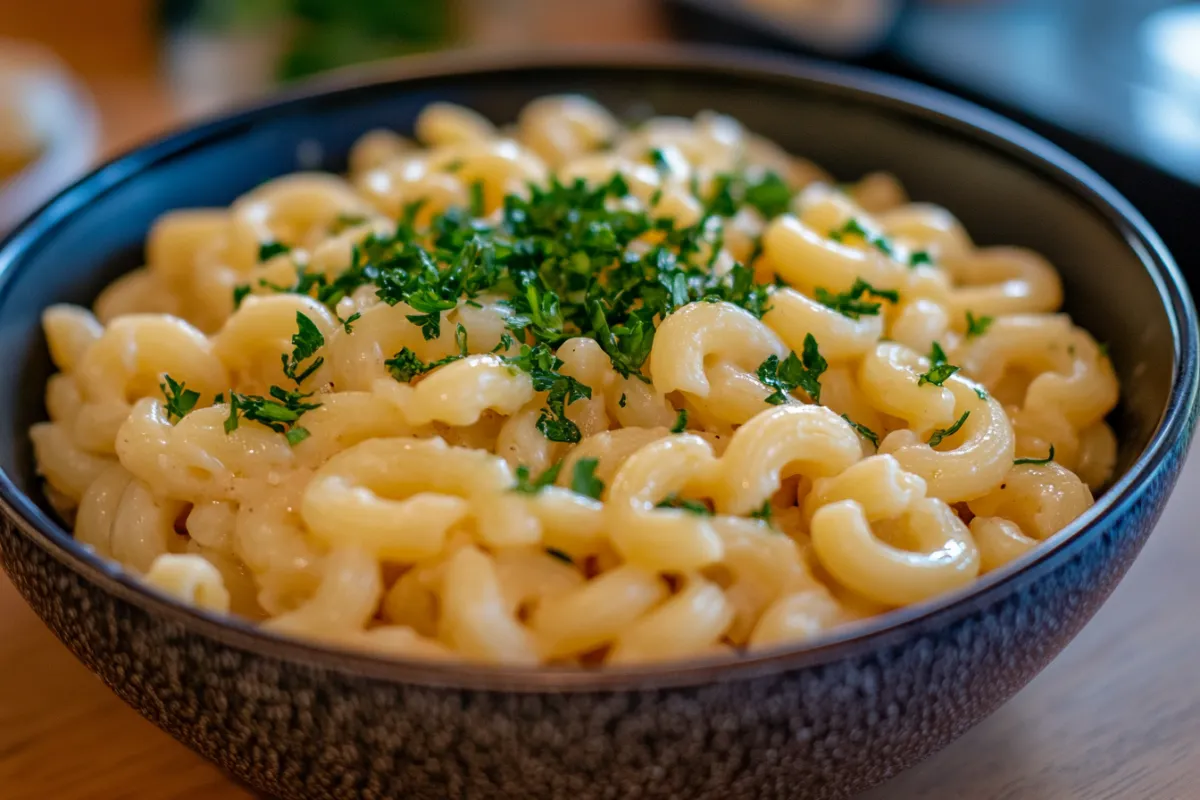What Kind of Pasta is Cavatappi?
Pasta has long been a staple food across cultures, from spaghetti in Italy to macaroni in American comfort dishes. Among the variety of pasta shapes, cavatappi stands out for its distinct corkscrew shape and versatility in a wide array of dishes. So, what exactly is cavatappi, and what makes it unique among other pasta types?
In this article, we will explore the origins, characteristics, and best uses of cavatappi, how it compares to other pasta shapes like macaroni and fusilli, and answer frequently asked questions to help you master cooking with this delightful pasta.
What is Cavatappi?
Cavatappi is a type of pasta known for its corkscrew shape, which resembles a spiral or helix. The word “cavatappi” is Italian for “corkscrew,” aptly describing its twisted form. This pasta shape is typically ridged, which enhances its ability to hold onto sauces, making it an excellent choice for creamy or cheesy dishes.
According to Cavatappi Pasta Recipes, Cooking Tips, and Uses, cavatappi has grown in popularity due to its versatility and ability to elevate both simple and gourmet dishes. Unlike smoother pasta shapes, its ridges and twists make it particularly suitable for baked dishes or recipes with rich sauces.
The Origin and Evolution of Cavatappi
Cavatappi originated in Italy, like most pasta, and its unique shape was developed to optimize the way sauces cling to it. While pasta shapes vary regionally across Italy, cavatappi gained popularity for its combination of visual appeal and functionality. Unlike other twisted pasta shapes, such as fusilli, cavatappi typically has more pronounced spirals, making it more robust in terms of structure.
Cavatappi’s Rise in Popularity
While cavatappi may have its roots in Italy, its popularity has expanded globally, particularly in the U.S. It is now a common choice in restaurants and homes alike, especially in dishes that require a pasta with more texture and body. The shape not only holds sauces well but also adds an aesthetic flair to the plate, making it a favorite in gourmet presentations.
For more about Italian-inspired pasta dishes, you might find Ultimate Guide to Capellini Pasta helpful, especially if you’re curious about other pasta shapes that have become popular outside Italy.
Cavatappi vs. Other Pasta Shapes
Cavatappi is often compared to other pasta shapes, particularly macaroni and fusilli, due to their similar uses in various dishes. However, each pasta shape has its own characteristics that make it suitable for different recipes.
1. Cavatappi vs. Macaroni
- Shape: While macaroni is typically small and elbow-shaped, cavatappi is a longer, spiral-shaped pasta.
- Sauce Retention: Cavatappi’s spirals and ridges make it superior in holding thick sauces compared to the smooth surface of macaroni. This makes cavatappi a preferred choice for creamy Alfredo or cheese-based dishes.
- Texture: Cavatappi has a firmer texture when cooked, which can provide a more satisfying bite compared to macaroni.
For more detailed comparisons of these pasta shapes, check out Cavatappi vs Macaroni, which provides an in-depth look at when to use each type of pasta.
2. Cavatappi vs. Fusilli
- Shape: Fusilli is also spiral-shaped, but its coils are typically tighter and smaller than those of cavatappi.
- Best Uses: Fusilli is great for lighter sauces, while cavatappi excels with rich, creamy sauces that need more surface area to cling to.
- Cooking Time: Cavatappi may take slightly longer to cook than fusilli due to its larger, thicker shape.
Both shapes work well in salads, but cavatappi is better suited for hearty dishes like baked pasta or pasta with a cheese-based sauce.
Best Cooking Methods for Cavatappi
Cavatappi is incredibly versatile and works well with a variety of cooking methods. However, its shape requires some specific techniques to maximize its flavor and texture.
Ideal Cooking Time
The best way to cook cavatappi is to bring a large pot of salted water to a rolling boil, then cook the pasta for about 9-12 minutes until it reaches al dente. Al dente refers to the pasta being firm to the bite, which is important for dishes like cavatappi and cheese or baked cavatappi to prevent the pasta from becoming too soft during the additional cooking process.
For dishes that require baking, consider slightly undercooking the pasta during boiling to ensure it retains its firmness after baking.
Cavatappi in Cold Dishes
Cavatappi also works exceptionally well in cold dishes like pasta salads. Its spiral shape holds onto dressings, herbs, and other ingredients, making it an ideal choice for a hearty pasta salad with vegetables and vinaigrette. The pasta’s ridges further ensure that every bite is packed with flavor.
To explore more pasta pairings, you can refer to What is Consomme?, which covers perfect pairings for different types of pasta.
Best Recipes for Cavatappi
Cavatappi can be used in a wide range of dishes, from simple mac and cheese to more elaborate baked pasta casseroles. Here are some of the best ways to use cavatappi in your kitchen:
1. Baked Cavatappi with Cheese
This classic dish is perfect for showcasing cavatappi’s ability to hold onto thick cheese sauces. By using a mixture of cheddar, Parmesan, and Gruyere, you can create a rich, creamy sauce that clings perfectly to the spirals of the pasta.
2. Cavatappi Alfredo
Alfredo sauce is a perfect pairing for cavatappi, as the creamy sauce seeps into the ridges of the pasta, providing a flavorful, indulgent meal. Adding grilled chicken or shrimp can elevate this dish even further.
3. Cavatappi with Pesto and Roasted Vegetables
The spiral shape of cavatappi holds onto pesto beautifully, making it ideal for a fresh, light pasta dish. Roasted vegetables like zucchini, bell peppers, and cherry tomatoes complement the earthy flavor of the pesto, creating a balanced and nutritious meal.
For additional inspiration, try exploring the Ultimate Guide to Crab Legs for side dishes and tips on pairing your pasta creations with seafood.
Nutritional Information and Health Benefits of Cavatappi
When it comes to pasta, the nutritional content can vary slightly depending on the type of wheat used and whether the pasta is enriched or whole grain. Cavatappi made from durum wheat is high in carbohydrates, which provide a steady source of energy, while also offering small amounts of protein and fiber.
Nutritional Breakdown (Per 100g of cooked cavatappi):
- Calories: 150-200 kcal
- Carbohydrates: 30-40g
- Protein: 5-7g
- Fiber: 1-2g
Cavatappi can also be found in gluten-free varieties made from rice, corn, or quinoa, making it suitable for those with gluten intolerance. Whole wheat cavatappi provides more fiber and micronutrients compared to traditional versions, making it a healthier choice for those looking to increase their intake of whole grains.
FAQs: Common Questions About Cavatappi
1. Is Cavatappi Gluten-Free?
Traditional cavatappi is made from durum wheat, which contains gluten. However, gluten-free versions are available, typically made from corn, rice, or quinoa.
2. Can I Substitute Cavatappi for Macaroni?
Yes, cavatappi can be substituted for macaroni in most recipes. The main difference will be in texture, as cavatappi’s spiral shape holds onto sauces better than macaroni.
3. What Sauce is Best for Cavatappi?
Cavatappi works best with thick, creamy sauces like Alfredo, cheese sauces, or rich tomato-based sauces. Its ridged surface holds onto the sauce, ensuring each bite is flavorful.
4. Is Cavatappi Healthier Than Macaroni?
Nutritionally, both cavatappi and macaroni are similar if made from the same ingredients. The choice between the two comes down to the desired texture and dish presentation rather than health benefits.
5. What Does Cavatappi Pair Well With?
Cavatappi pairs well with rich, creamy sauces, grilled vegetables, roasted meats, and even seafood. Its versatility makes it a go-to pasta for many different dishes.
Conclusion
Cavatappi is a versatile and unique pasta shape that is perfect for a wide range of dishes, from classic baked casseroles to light, fresh pasta salads. Its ridges and spirals make it ideal for holding onto sauces, and its firm texture adds a satisfying bite to every meal. Whether you’re using it in a rich cheese-based sauce or pairing it with pesto and roasted vegetables, cavatappi is sure to elevate your pasta dishes.
For further exploration of pasta-related content, visit Cavatappi Pasta Recipes for more detailed recipes and cooking tips.

